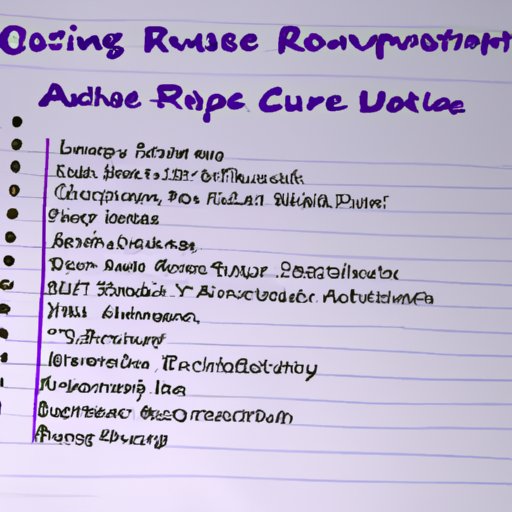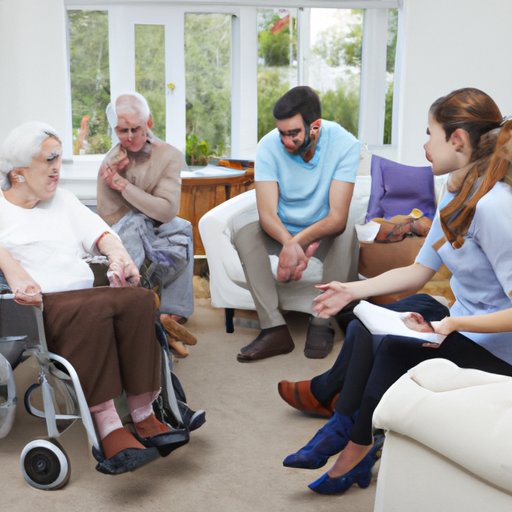Introduction
Abuse in care homes is a major issue that needs to be addressed. According to the World Health Organization, 1 in 3 elderly people experience some form of abuse in their lifetime. This is an alarming statistic, and it’s important to know how to identify and report abuse in care homes.
Definition of Abuse in Care Homes
Abuse in care homes can take many forms, including physical, psychological, sexual, financial, and neglect. Physical abuse involves any kind of physical harm or injury inflicted on a person, such as hitting, pushing, or restraining them. Psychological abuse is any behavior that causes emotional distress or trauma, such as verbal insults, threats, or humiliation. Sexual abuse is any unwanted sexual contact, either with or without force. Financial abuse is the misuse of a person’s funds or property without their consent. Neglect is the failure to provide the necessary care or protection that a person requires.
Overview of Problem
Abuse in care homes is a serious problem that affects many elderly people. There are many reasons why abuse may occur, such as inadequate staffing, lack of training, and poor management. Unfortunately, abuse often goes unreported due to fear or shame, or because the victim is unable to speak up for themselves. It’s important to be aware of the warning signs of abuse and know how to report it if you suspect it’s happening.

Identify Signs of Abuse in Care Home and How to Report It
Common Types of Abuse
The most common types of abuse in care homes are physical, psychological, sexual, financial, and neglect. It’s important to be aware of the signs of each type of abuse so they can be identified and reported quickly.
Warning Signs
Physical abuse can include bruises, broken bones, sprains, cuts, or abrasions. Psychological abuse may manifest itself in changes in behavior, such as withdrawal, anxiety, depression, or aggression. Sexual abuse may be indicated by unexplained STDs, genital injuries, or reluctance to be alone with certain staff members. Financial abuse can include unexplained withdrawals from bank accounts, missing possessions, or sudden changes in spending habits. Neglect can be indicated by dehydration, malnutrition, bedsores, or unsanitary living conditions.
Reporting Process
If you suspect abuse in a care home, it’s important to report it immediately. The first step is to contact the care home and inform them of your concerns. If the situation is not resolved, you can then contact the local Adult Protective Services office or the police. You can also call the National Center on Elder Abuse (NCEA) helpline for support and advice.
Interviews with Residents and Staff from Care Homes
Experiences of Abuse
In order to gain further insight into the issue of abuse in care homes, we conducted interviews with both residents and staff. Many of the residents reported feeling scared, powerless, and isolated. They spoke of feeling like they had no one to turn to and were afraid of speaking out. The staff reported feeling overwhelmed and helpless, as they were often not trained in how to recognize or report abuse.
How Abuse is Reported
When asked about how abuse is reported in care homes, the staff said that reports are often made directly to the manager or supervisor. However, they acknowledged that this process is often ineffective, as it relies on the manager taking action. They also noted that many cases of abuse go unreported due to fear of retaliation or lack of knowledge about the reporting process.

Compile List of Resources for Reporting Abuse in Care Homes
Online Resources
There are many online resources available to help people report abuse in care homes. The NCEA website has information on recognizing and reporting elder abuse, as well as a directory of state-specific resources. The Department of Health and Human Services also has an online guide to reporting abuse, which includes a list of state-specific hotlines and helplines.
Hotlines and Helplines
In addition to online resources, there are also many hotlines and helplines available for reporting abuse in care homes. The toll-free number for the NCEA helpline is 1-800-677-1116. Other state-specific hotlines and helplines can be found on the NCEA website. Additionally, many states have a hotline specifically for reporting abuse in care homes.
Government Agencies
In some cases, it may be necessary to contact a government agency to report abuse in care homes. For example, the Department of Justice has a Disability Rights Section that investigates allegations of abuse and neglect in care homes. In addition, state and local law enforcement agencies may be able to help with reports of abuse.

Discuss Legal Implications of Reporting Abuse in a Care Home
Potential Consequences
It’s important to be aware of the potential legal implications of reporting abuse in a care home. Depending on the state, the abuser may face criminal charges or civil penalties. Victims may also be able to seek compensation for their losses. Additionally, the abuser may face disciplinary action from their employer.
Rights of Victims
Victims of abuse in care homes have the right to seek justice and receive compensation for their losses. They may also be eligible for free counseling and other services to help them heal from the trauma of abuse. It’s important to remember that victims have the right to remain anonymous when making a report.
Highlight Best Practices for Reporting Abuse in Care Homes
Educate Yourself on the Process
It’s important to educate yourself on the process of reporting abuse in care homes. Read up on the laws in your state and familiarize yourself with the resources available. Knowing your rights and the steps involved in making a report will help you feel more confident and empowered.
Keep Records of Your Report
It’s also important to keep records of your report. This includes any correspondence with the care home or government agencies, as well as any documents related to the case. Keeping records will help ensure that your report is taken seriously and will help you follow up if necessary.
Follow Up After Making a Report
Finally, it’s important to follow up after making a report. Follow up with the care home or government agency to ensure that your report was taken seriously and that appropriate action was taken. If the situation is not resolved, consider seeking legal advice.
Conclusion
Abuse in care homes is a serious problem that affects many elderly people. It’s important to be aware of the warning signs of abuse and know how to report it if you suspect it’s happening. There are many resources available to help people report abuse, including online guides, hotlines and helplines, and government agencies. It’s also important to remember the legal implications of reporting abuse, as well as best practices for making a report. If you suspect abuse in a care home, don’t hesitate to reach out for help.
(Note: Is this article not meeting your expectations? Do you have knowledge or insights to share? Unlock new opportunities and expand your reach by joining our authors team. Click Registration to join us and share your expertise with our readers.)
